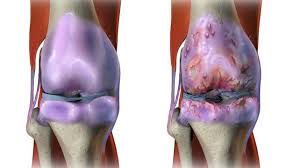Some quick stats & facts:
- 1 million Australians are believed to have osteoarthritis
- Woman are more likely to have it than men
- More than 25% of people 65 years and older experience some form of joint pain
- Being overweight doubles a person’s risk of having osteoarthritis
- Current guidelines recommend conservative (non-surgical) treatment
- Osteoarthritis is not an inevitable part of ageing & is not necessarily progressive
- Arthroscopic surgery provides no additional benefit over physiotherapy and medication for treatment of OA in the knee
What is Osteoarthritis?
Osteoarthritis is a disease of our joints. It is the most common form of arthritis in the knee. It is a degenerative type of arthritis and is most common in people over 50 years old.
Normally joints are protected by a smooth, firm, cushioning material called cartilage. The role of cartilage in our knees is to absorb shock and allow bones to glide smoothly over one another. Osteoarthritis causes the cartilage in our joints to gradually wear away. As it wears it becomes frayed and rough and the protective space between our bones decreases. This can result in bone rubbing on bone.
Why Me?!
The cause is not yet fully understood, however, there are certain factors that put us at higher risk:
- Over 45 years of age
- Overweight
- Previous injury or increased loading of particular joint
- Low bone density
- Family history
- Joint laxity and misalignment
- Reduced muscular strength
So, do I have OA in my knee?
Your treating therapist will be able to diagnose your knee pain. A scan can help to show the extent of your condition but may not be necessary.
Symptoms include:
- Joint stiffness and pain may be worse in the mornings or after rest
- It may become increasingly difficult to bend and straighten the knee
- Pain may flare up with increased activity
- Pain may cause weakness and sometimes buckling of the knee
- Swelling may fluctuate around the joint
- Many people report increased joint pain and rainy weather
What’s going to happen to me?
Currently there is no cure for OA, but a balance of healthy lifestyle and medications when necessary can adequately control your symptoms.
For most people OA will be mild and not cause major issues. However, OA of the knee can sometimes cause severe disability and require surgery to replace the joints. This is only proposed when conservative treatment, such as specific weight loss and exercise program, has been undertaken and not provided significant relief.
How do I manage my pain?
Regular exercise is one of the most important treatments for OA of the knee. It helps to reduce pain and maintain health of your cartilage. To protect your sore joints, try low-impact activities, where there is less force or weight going through your knees. Examples of low-impact activities include swimming, cycling and walking. Pilates and yoga are great too.
Physiotherapy can help through soft tissue release, joint mobilisation, acupuncture/dry needling and other treatment modalities. Your physio will help develop a strength program that suits your needs and gives you the best chance of relieving your pain without having to go under the knife!
TOP TIPS
- Keep moving and modify your daily activities to relieve pain
- Maintain a healthy diet
Speak to a health professional on how to manage your pain

